The ~40 species of Arthrosphaera are confined to Southern India, while eight species are confined to Sri Lanka(2). In list below(10), those with * I was able to find images of in publications:
Arthrosphaera atrisparsa (Butler, 1878) (India)
Arthrosphaera aurocincta Pocock, 1899 (India)*
Arthrosphaera bicolor Pocock, 1895 (India)*
Arthrosphaera carinata Attems, 1936 (India)*
Arthrosphaera craspedota Attems, 1936 (India)*
Arthrosphaera dalyi Pocock, 1895 (India)*
Arthrosphaera davisoni Pocock, 1895 (India)*
Arthrosphaera disticta Pocock, 1895 (India)*
Arthrosphaera fumosa Pocock, 1895 (India)*
Arthrosphaera fusca (Attems, 1943) (India)
Arthrosphaera gracilis Attems, 1936 (India)
Arthrosphaera hendersoni Pocock, 1895 (India)*
Arthrosphaera heterostictica (Newport, 1844) (India)
Arthrosphaera inermis (Humbert, 1865) (India, Sri Lanka)
Arthrosphaera lutescens (Butler, 1872) (India)*
Arthrosphaera madura Pandian, 1966 (India)
Arthrosphaera magna Attems, 1936 (India)*
Arthrosphaera marginella Silvestri, 1897 (India)
Arthrosphaera marmorata (Butler, 1882) (India)
Arthrosphaera nitida Pocock, 1895 (India)
Arthrosphaera pelloceps (Chamberlin, 1921) (India)
Arthrosphaera pygostolis Attems, 1935 (India)
Arthrosphaera scholastica Attems, 1936 (India)
Arthrosphaera severa Attems, 1935 (India)
Arthrosphaera silvestrii Jeekel, 2001 (India)
Arthrosphaera stridula (Verhoeff, 1937) (India)
Arthrosphaera thurstoni Pocock, 1895 (India)
Arthrosphaera transitiva Attems, 1936 (India)
Arthrosphaera wroughtoni Pocock, 1895 (India)*
Arthrosphaera zebraica (Butler, 1872) (India)*
Arthrosphaera versicolor (White, 1859) (Sri Lanka)*
Arthrosphaera attemsi Jeekel, 2001 (Sri Lanka)
Arthrosphaera brandti (Humbert, 1865) (Sri Lanka, introduced to Tanzania)*
Arthrosphaera corrugata (Butler, 1872) (Sri Lanka)
Arthrosphaera dentigera Verhoeff, 1930 (Sri Lanka)
Arthrosphaera ruginosa Jeekel, 2001 (Sri Lanka)
Arthrosphaera rugosa Verhoeff, 1930 (Sri Lanka)
Arthrosphaera leopardina (Butler, 1872) (Sri Lanka)
Arthrosphaera noticeps (Butler, 1872) (Sri Lanka)
Arthrosphaera pilifera (Butler, 1872) (Sri Lanka)
Below, I've shown published images along with the references (linked below) they are from
Arthrosphaera craspedota
References: 1,3,4

Arthrosphaera lutescens
References: 1,3,4
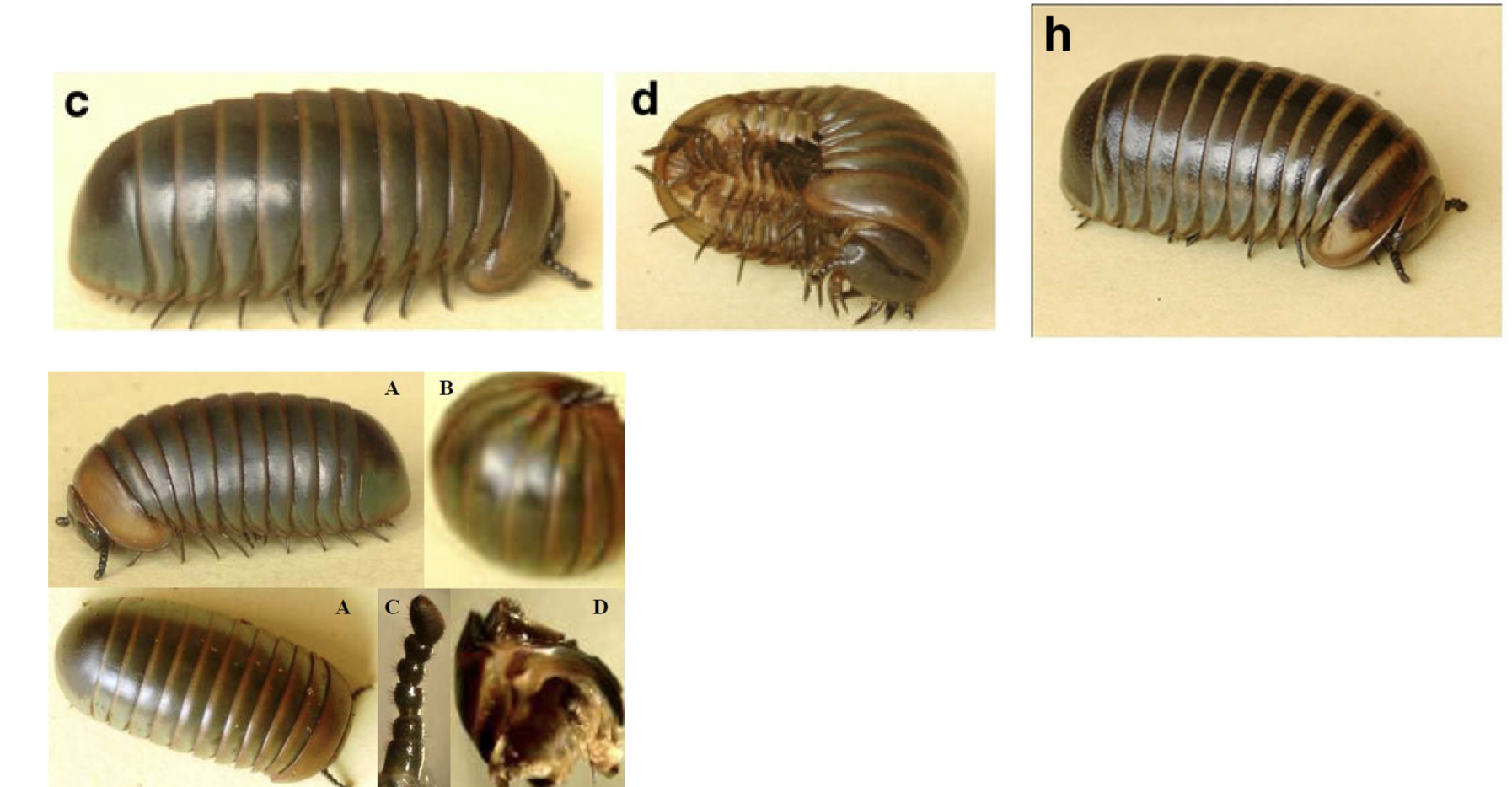
Arthrosphaera magna
References: 2,3,5,7,8
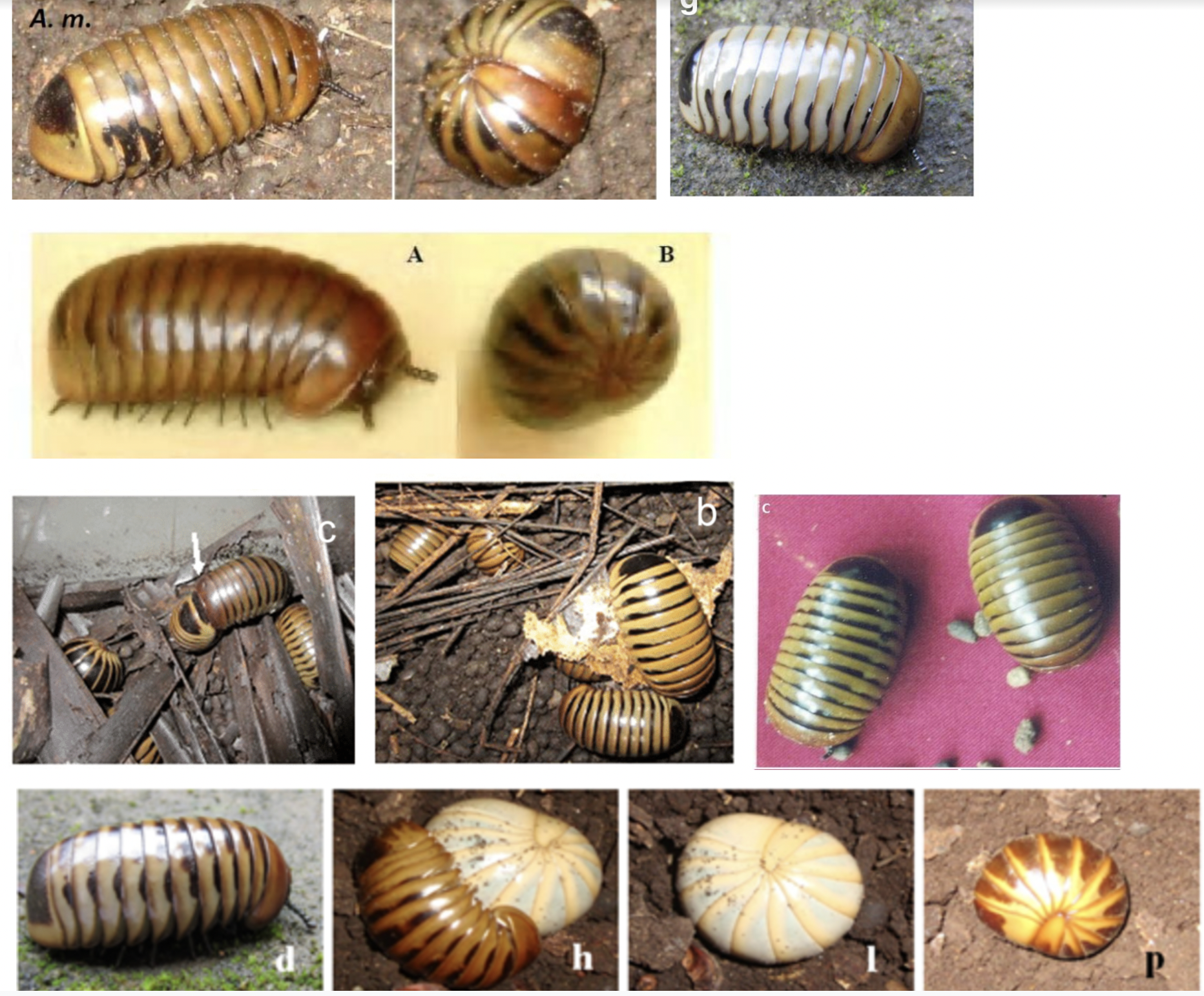
Arthrosphaera fumosa
References: 2,3,5,6,7,8,9
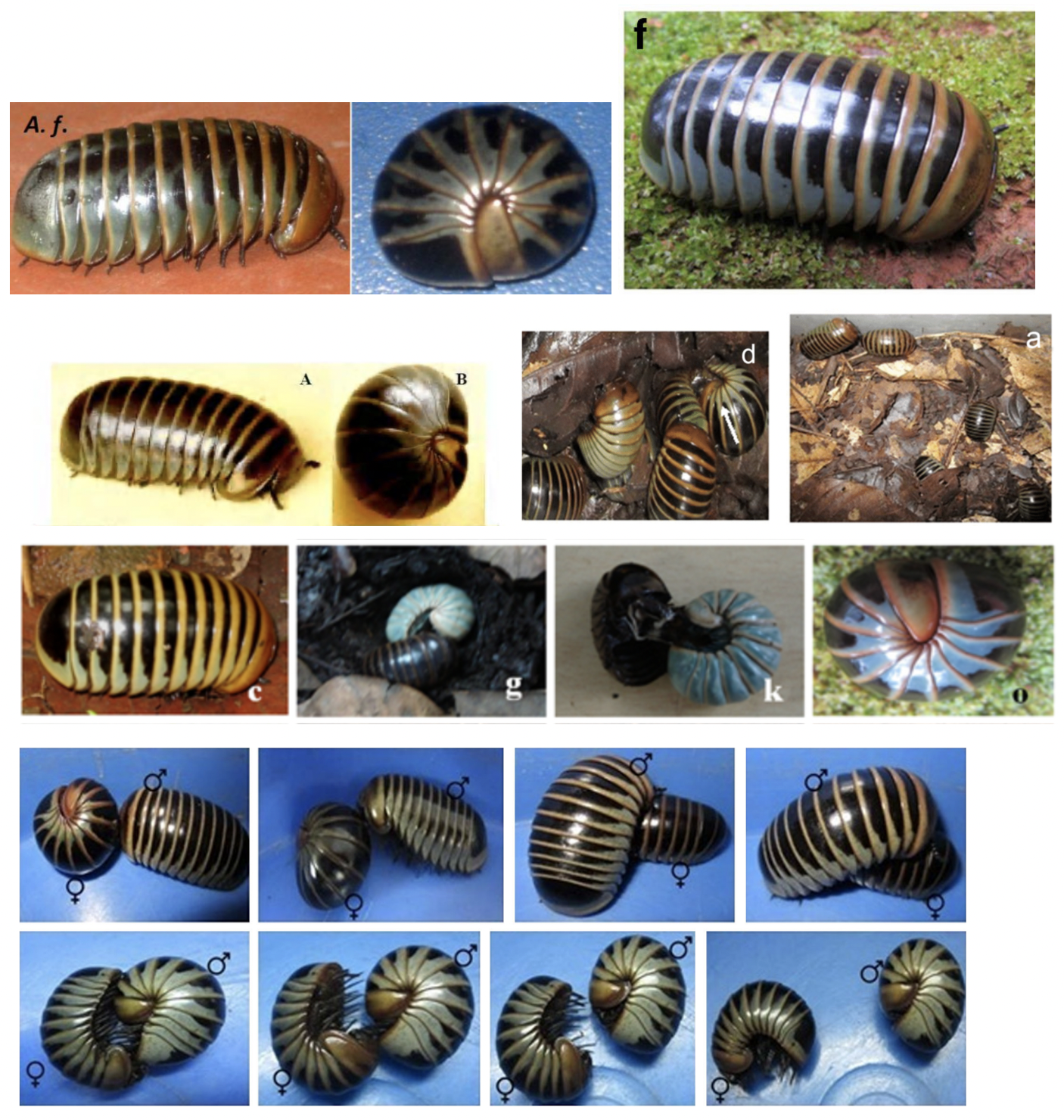
Arthrosphaera disticta
References: 2,3,8,9,11

This drawing and the corresponding description from Pocock(11) of “Arthrosphaera disticta” does not match these. Not sure why:

Arthrosphaera dalyi
References: 3,5,8

Arthrosphaera davisoni
References: 3,5

Arthrosphaera carinata
References: 3
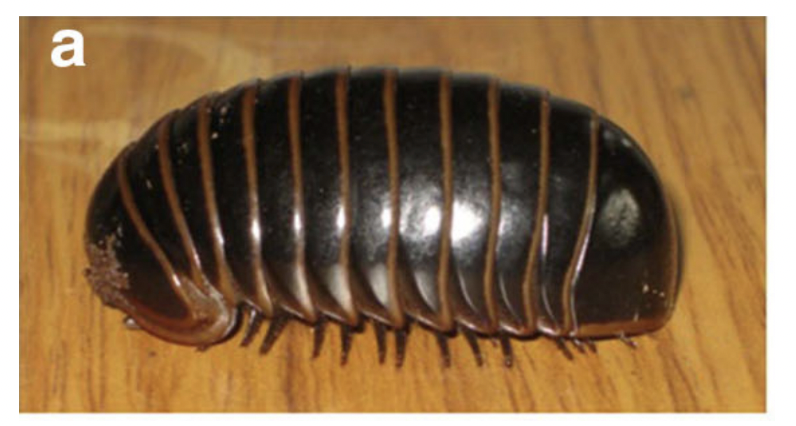
Arthrosphaera zebraica
References: 3,4

Arthrosphaera hendersoni
References: 3,11

Arthrosphaera versicolor
References: 3
This looks very different from the yellow/black “Arthrosphaera versicolor” from Sri Lanka. And according to Wesener(10) Wesener, A. versicolor does not occur in India
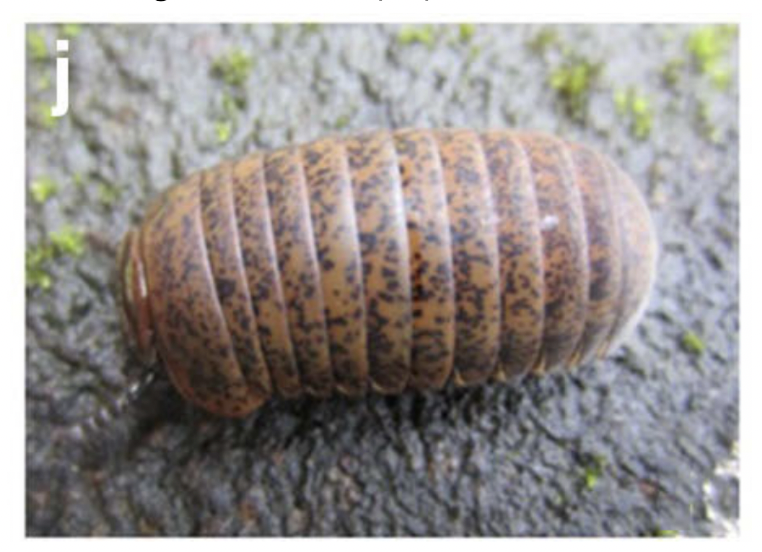
Arthrosphaera wroughtoni
References 11

Arthrosphaera thurstoni
References 11

Arthrosphaera bicolor
References 11

Arthrosphaera aurocincta
References 11

Arthrosphaera brandti
References: 10

References
1 Ambarish, Cheviri Nair, Bombrana Seetharama Kadamannaya, and Kandikere Ramaiah Sridhar. "Chromosome studies on two endemic pill-millipedes of the genus Arthrosphaera (Diplopoda: Sphaerotheriida) from the Western Ghats of India." The Nucleus 56.3 (2013): 205-210.
2 Ambarish, C. N., and K. R. Sridhar. "Observation on pill-millipedes of the Western Ghats (India)." Journal of Agricultural Technology 9.1 (2013): 61-79.
3 Ambarish, Cheviri N., and Kandikere R. Sridhar. "Occurrence, Distribution and Morphological Description of 11 Species of Endemic Giant Pill-Millipedes of the Genus Arthrosphaera (Diplopoda: Sphaerotheriida: Arthrosphaeridae) in Southern India." Proceedings of the Zoological Society. Vol. 71. No. 1. Springer India, 2018.
4 Kadamannaya, B. S., C. N. Ambarish, and K. R. Sridhar. "Morphological features of three endemic pill-millipedes of the genus Arthrosphaera in the Western Ghats of India." Animal Biology Journal 3.4 (2012): 181-193.
5 Kadamannaya, B. S., and K. R. Sridhar. "Morphology and distribution of four pill millipedes (Arthrosphaera) of the Western Ghats." Animal Biology Journal 1.8 (2009): 98.
6 Ambarish, Cheviri N., and Kandikere R. Sridhar. "Diurnal periodicity of three giant pill-‐millipedes (Sphaerotheriida: Arthrosphaera) of the Western Ghats: an ex situ study." Journal of Tropical Asian Entomology 4.1 (2015): 1-10.
7 Sridhar, K. R., and K. M. Ashwini. "Diversity, restoration and conservation of millipedes." Biodiversity in India 5 (2011): 1-38.
8 Ambarish, Cheviri N., and Kandikere R. Sridhar. "Moulting behaviour of the giant pill-millipedes (Sphaerotheriida: Arthrosphaera) of the Western Ghats of India: an ex situ study." The Journal of Tropical Asian Entomology 3.1 (2014): 12-22.
9 Ambarish, Cheviri N., and Kandikere R. Sridhar. "Stridulation and courtship behaviour of four endemic pill-millipedes, Arthrosphaera spp.(Sphaerotheriida: Arthrosphaeridae) of the Western Ghats of India." Proceedings of the Zoological Society. Vol. 69. No. 1. Springer India, 2016.
10 Wesener, Thomas, and Zoologisches Forschungsmuseum Alexander Koenig. “The giant pill-millipedes, order Sphaerotheriida: an annotated species catalogue with morphological atlas and list of apomorphies (Arthropoda: Diplopoda)”. Zoologisches Forschungsmuseum Koenig-Leibniz-Institut für Biodiversität der Tiere, 2016.
11 Pocock, Reginald Innes. "A monograph of the pill-millipedes (Zephroniidae) inhabiting India, Cylon and Burma." Bombay Nat. Hist. Soc. 12 (1899): 269-285.
Expert interview
I was very fortunate to have the opportunity to meet with Dr. Cheviri N. Ambarish, the author of references 1,2,3,4,6,8,9 above who is probably the world's foremost living expert on Arthrosphaera pill millipedes.

We browsed through and discussed various iNaturalist observations
https://www.inaturalist.org/observations?lat=14.8&lng=76.5&radius=1225&taxon_id=999505
Unfortunately, even through we found many distinctive groups (which I'll hopefully add into this post later) they don't have names and he was only fairly confidently able to ID and put names to observations of the following taxa.
Arthrosphaera fumosa
These have the distinctive smokey bluish color
https://www.inaturalist.org/observations?lat=14.8&lng=76.5&place_id=any&radius=1225&taxon_id=1303874
Arthrosphaera disticta
These have distinctive colors and shapes
https://www.inaturalist.org/observations?id=12595412&place_id=any
Arthrosphaera zebraica
These have distinctive colors
https://www.inaturalist.org/observations?id=61284031,61270177&place_id=any
Arthrosphaera versicolor
While Wesener doesn't list these as occurring in India (only Sri Lanka), Ambarish worked with/photographed them in Reference 3 and was confident that these brownish spotted millipedes were indeed Arthrosphaera versicolor. It could be more study is needed to separate the Sri Lanka Arthrosphaera versicolor from the Indian Arthrosphaera versicolor as they look totally different.
https://www.inaturalist.org/observations?id=139603861,79630224
While super interesting and I've very grateful for Ambarish, I have to say this study was a little frustrating. Clearly, more work is needed on this group to assign names to these taxa before we can identify many of them to species.















































